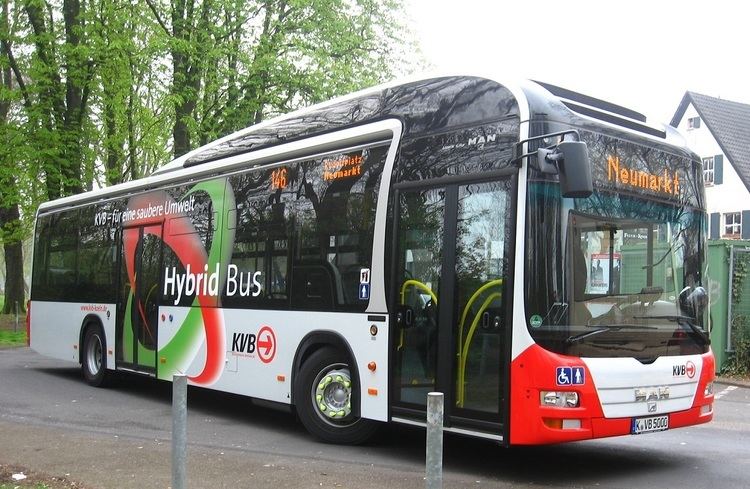Manufacturer MAN Truck & Bus Class Integral bus | Production 1996–present Doors 1, 2, 3, 4 or 5 | |
 | ||
Assembly Germany: Augsburg/Nobitz (Göppel Bus), Plauen/Pilsting (Neoplan/Viseon Bus), SalzgitterPoland: Starachowice/Sady (MAN Bus)Turkey: Ankara (MANAŞ) Body style MidibusSingle-decker busArticulated busDouble-decker bus | ||
The MAN Lion's City is a range of low-floor and low-entry public buses built by German truck and bus manufacturer MAN Truck & Bus (previously MAN Nutzfahrzeuge) since 1996 primarily for the European market, but is also available in chassis-only variants worldwide. The name Lion's City has been used since 2004, when MAN's public bus models which had been marketed separately were gathered into one range, when also most models received a facelift. The first models to be introduced were the 12-metre low-floor intercity bus NÜ xx3 (A20) in 1996, the 12-metre city bus NL xx3 (A21) in 1997 and the articulated NG xx3 (A23) in 1998. As with former MAN bus models the power-rating made up part of the model name, giving the NÜ-series buses with power-ratings of 260 and 310 hp model names NÜ 263 and NÜ 313 respectively. The main production sites are in Starachowice and Sady in Poland, but the models have also been built in Germany and Turkey. Initially most of the midibus variants were manufactured by Göppel Bus in Augsburg, later Nobitz.
Contents
Models are available with a 6-cylinder turbocharged straight engine which runs on diesel, compressed natural gas or liquefied petroleum gas. Versions with hydrogen fuel cell drive and with hydrogen internal combustion engines have been successfully tested, as well as diesel-electric hybrid drive. A production hybrid-electric version, the Lion's City Hybrid, which uses supercapacitors and two 67 kW electric motors is available since 2010. Hybrid electric buses offer increased efficiency in urban traffic and use 30% less fuel than combustion-only buses.
The latest generation of Neoplan Centroliner is based on the Lion's City (Neoplan was also part of the Neoman Bus group).
Integral variants
Codes inside parentheses are internal codes that identify some technical characteristics of the variants, like length/wheelbase, number of axles, floor height, width, engine arrangement and so on. Some codes are unique to one variant, while others are shared between variants. Some variants have changed from one code to another over time. These codes are sometimes mistakenly used as a model designation. One can find the codes in VINs (ie. WMAA21...) and in vehicle production serial numbers (ie. A210012).
Current
Discontinued
Type designation system
The type designations were used to define all models prior to 2004. With the introduction of the model names in 2004, the system is still in use on all vehicles, but is more for internal use. In most cases it can be found on the plate inside the bus where one find the VIN.
